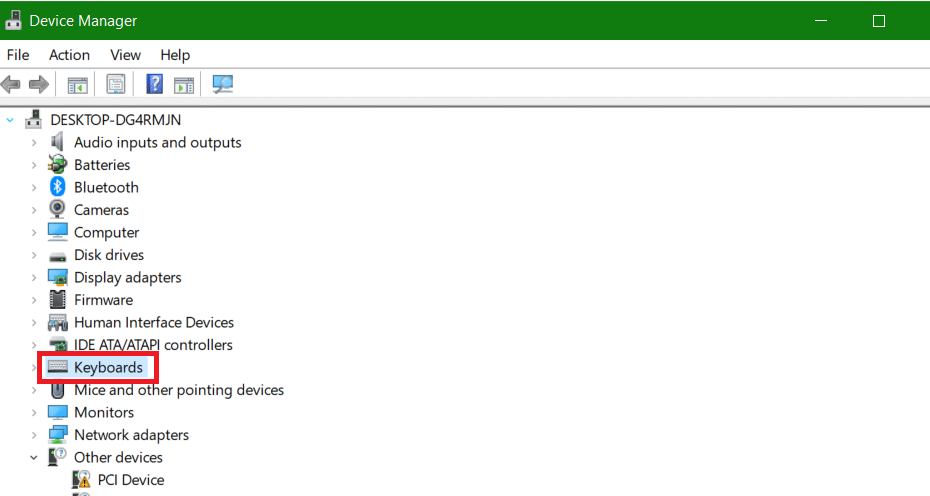Sometimes your surface pro keyboard may start acting up, and sometimes, it may stop working altogether.
There are a number of reasons why this might happen, including both software problems and hardware problems.
In most cases, you can simply update the driver or reset some part of the software package.
In this article, we will look at some issues that might lead to your Surface pro keyboard not working and how to fix them. Read on to find the perfect solution.
This Article Covers:
In Short: How to Fix Surface Pro Keyboard Not Working
The most common way to fix a keyboard on a surface pro not working is to go to your keyboard drivers and update them, then restart your PC. Here’s how:
- Go to Device Manager.
- Go to Keyboards.
- Choose a drive and Right-click it
- Click Update driver.
- Restart your PC.
Why Is My Surface Pro Keyboard Not Working?
There are quite a few reasons why your surface pro keyboard may not be working. They include
- Dirt build-up in the connectors.
- Low battery on your wireless keyboard
- Out-of-date or poorly set-up drivers
- Faulty configurations.
- Physical or water damage
Here are some reasons that may result in your surface pro keyboard not working. You should check this before you start trying to fix anything:
Check the Batteries
If you’re using a wireless keyboard, then they need to be charged to work. Even a low battery can make your Microsoft surface pro keyboard not work, so make sure your keyboard is fully charged.
A low battery can also affect your troubleshooting methods, so make sure your keyboard is charged before trying any way to fix it.
Check your Keyboard Settings
Sometimes, your keyboard settings may change due to an update or if you reset your PC. You should check your PC settings before you start trying to fix anything. To do so:
- Go to Settings > Devices
- Choose Typing.
- Check your keyboard settings.
Your keyboard may also be locked. Luckily, we have a full guide on how to unlock your keyboard.
Clean the Connectors
One reason why your surface pro might not be working is because of dirt buildup. Your connectors may also get clogged due to grime and dust, and this will affect how your keyboard works and may lead to the surface pro not recognizing the keyboard.
Check the connector ports for grime and use a q-tip to clean them. You can use a little bit of Isopropyl alcohol to clean, but otherwise, make sure not to use any other liquid.
Check for Physical Damage
Check your Microsoft surface keyboard for any signs of physical damage or water damage. If you find any, then the only way to fix this is to take your keyboard for repair or, in the worst-case scenario, buy a new one.
How to Fix Surface Pro Keyboard
1. Disconnect
One issue that might lead to your Microsoft Surface keyboard not working is loose connectivity. Your keyboard is connected to the screen using connector pins. Detach the keyboard and examine the pins and the connection ports. Check if the pins are broken or bent and any other damage that may affect the connection.
If you have another surface pro close by, you could also try connecting it to see if the problem is with the keyboard or the surface.
For wireless keyboards, try pairing and unpairing the keyboard:
- Go to Settings > Devices
- Click Bluetooth and other devices.

- Go to the Surface Pro keyboard and click the three dots beside it.
- Click Remove Device.
- Turn Bluetooth off and on.
- Click Add Device.
- Choose the Surface Pro Keyboard
- Test the Keyboard
If this doesn’t work, try the next method.
2. Restart your PC
The thing with devices is that sometimes they overload, and a simple, quick fix is to restart them. The same may apply to your surface pro keyboard.
Here’s how to do it:
- Disconnect your keyboard from your surface
- Restart the PC
- Reconnect your keyboard
This method should fix any lag issues and kickstart your surface pro keyboard.
3. Do a Two-Button Shutdown
Sometimes, a simple restart isn’t enough to solve your problem, especially if the hardware is corrupted.
A two-button shutdown may resolve the issue. To perform one:
- Press and hold the power button and the volume button at the same time
- Keep holding even after you see the surface logo
- Hold the buttons until you get to BIOS.
- Click Exit > Restart Now.
Another way to do this is to:
- Hold the power button for at least 30 seconds
- Then hold the power button and the volume button down for around 15 seconds.
For Surface 3, 2, and RT, you’ll need to do a forced shutdown. To do this, hold down the power button for about 10 seconds, and it should shut down. You can then restart it and test your keyboard.
4. Update and Reinstall Drivers
Another problem might be that your drivers are out of date and no longer compatible. Drivers are constantly being updated to fix bugs and add new features. You can try to update or reinstall your driver:
- Go to Device Manager > Keyboards

- Right-click it and Uninstall device.

- Go to Human Interface Controllers section
- Check for any driver with a danger sign beside it and uninstall it.
- Restart your PC.
This should reinstall your drivers. To update instead:
- Go to Device Manager.
- Go to Keyboards.

- Choose the device and Right-click it.
- Click Update driver.

- Restart your PC.
5. Update Windows
Updating windows is a quick way to ensure that all your drivers and other important software are updated:
- Go to Settings > Update & security.
- Click Windows Update.

- Click Check for Updates.
- Click Download & Install.
In most cases, you will need to restart your device for the update to take effect.
6. Reset
In case there are faulty configurations in your PC, this can’t be solved by any of the methods above. You can try resetting your PC to factory settings, but first, make sure to backup up your data:
- Go to Settings > Update & security
- Click Recovery > Get started
- Two options will appear: “Keep my Files” and “Remove everything”. Choose “Keep my files” if you have important data you don’t want to lose.
- Start the system again and test your keyboard.
7. Take your Device for Repair
If all else fails, you might need to take your keyboard for repair. To do this, you can contact Microsoft support. There are also third-party repair stores that can fix your surface pro keyboard for you. Depending on the amount of damage, it might even be better to replace it with an alternative keyboard.
Frequently Asked Questions
How Do I Clean My Surface Pro Keyboard?
Your surface pro keyboard will often build up dirt after a while. To clean it:
- Disconnect your keyboard from your surface pro.
- Check the connector ports for grime and use a q-tip with a little isopropyl alcohol to clean them.
- Wait for it to dry completely before reconnecting.
How Do I Change the Sensitivity of My Surface Pro Keyboard?
Here’s how to change the sensitivity of your Surface Pro keyboard:
- Go to Settings > Devices
- Choose Typing.
- Adjust the keyboard sensitivity.
How Do I Type on Surface Pro Without a Keyboard?
The Surface Pro also comes with a touchscreen keyboard. If you’re having trouble with your keyboard or have none, you can use this instead. To turn it on:
- Go to Settings > Accessibility or Ease of Access.
- Go to Keyboard
- Turn on On-screen Keyboard.
You can also use the keyboard shortcut Win+Ctrl+O.
How Do I Make the Surface Pro On-Screen Keyboard Bigger?
If you’re struggling to use the on-screen keyboard, you can also make it larger. To do this:
- Go to Settings > Accessibility or Ease of Access.
- Go to Keyboard
- Turn on On-screen Keyboard.
- Put your cursor at the edge of the on-screen keyboard until a double arrow cursor appears,
- Click and drag the edges to resize the on-screen keyboard.
Wrapping Up
In this article, we have shown you a couple of ways to fix your surface keyboard when it’s not typing. Hopefully, at least one of the methods in this article solved the issue of your surface pro keyboard not working. Let us know in the comments which one worked best for you.
Related:





